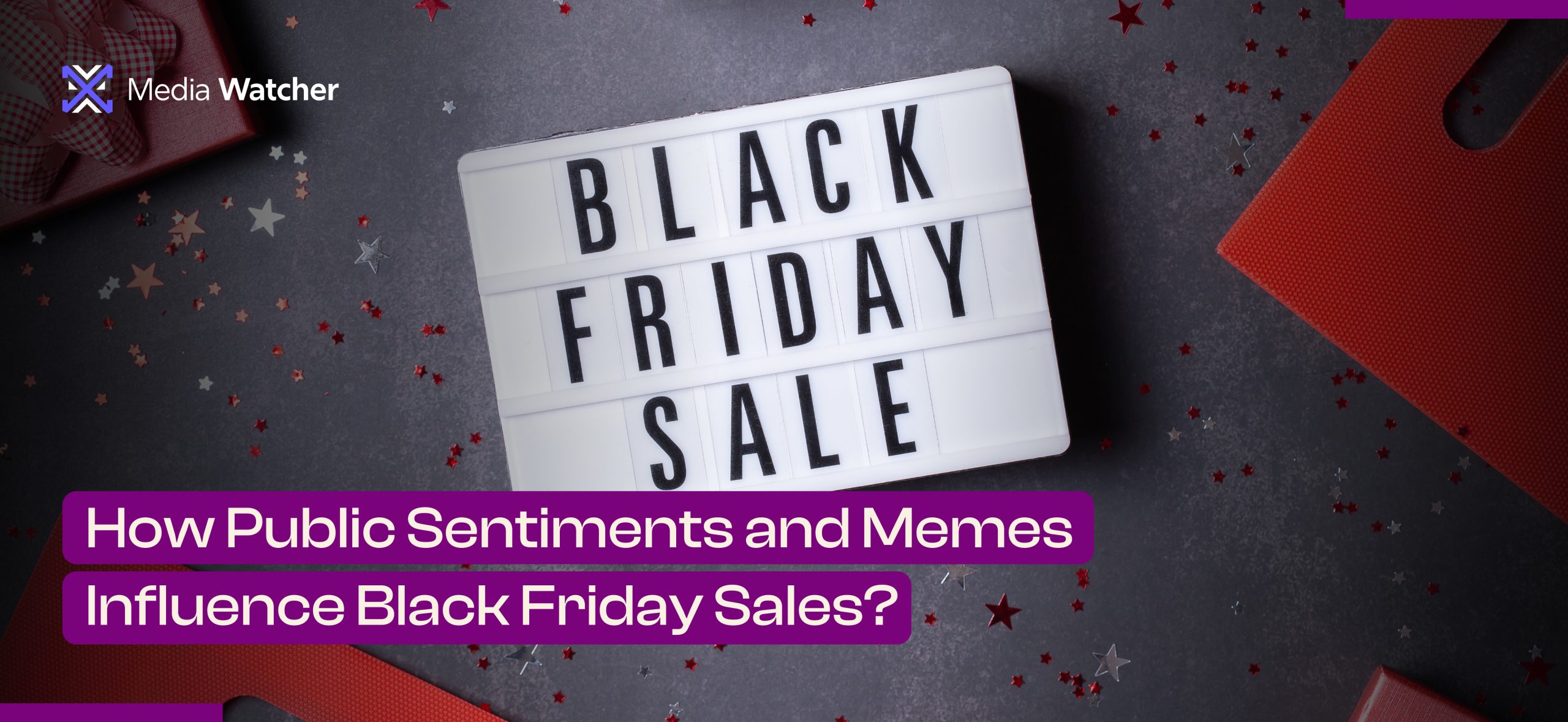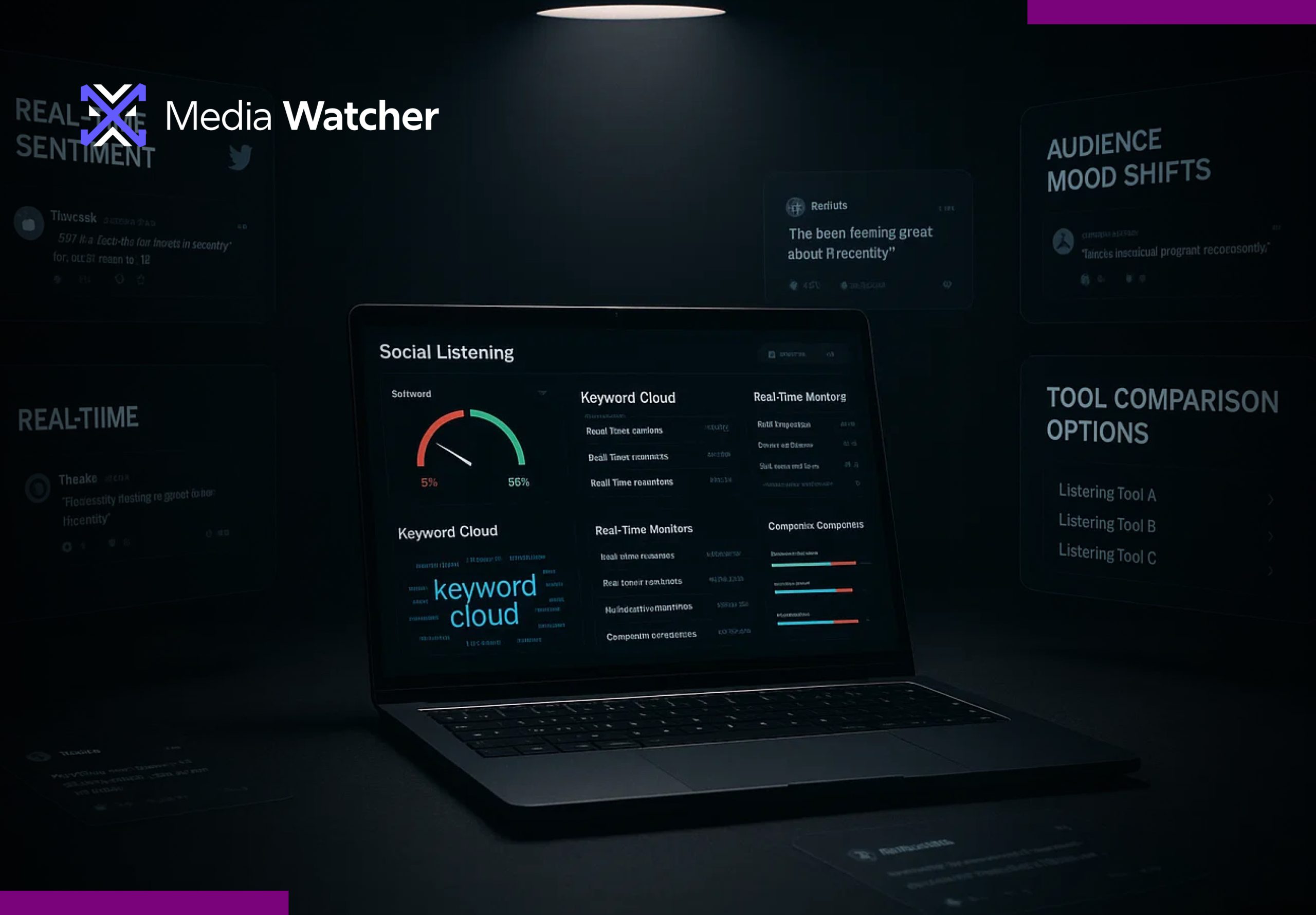Ah, Black Friday, the yearly Wake-Up Call to humanity, reminding us that we are all a single good discount off, and running like Olympians out of the store to a checkout button. If shopping were a competitive sport, black friday would be the World Cup Finals, the Super Bowl, and the emotional Olympics all rolled into one.
Beneath the commotion, there is the great sea of feeling-driven action, something that brands can read only with the help of sentiment analysis Black Friday sale data. And trust us, the emotional rollercoaster makes even telenovelas look tame.
Thanks to Black Friday media analysis tools, sentiment dashboards, and the treasure trove of consumer memes pouring out of Reddit like confetti at a parade, we have a crystal-clear view of how customers actually feel this year.
And spoiler alert: it’s a mix of excitement, skepticism, humor, panic-buying energy, and the occasional existential crisis.
So grab your virtual popcorn. Let’s explore the online mood patterns that characterize Black Friday sales, fueled by Media Watcher data, real Reddit responses, and a ton of online melodrama.
How Consumers Really Feel About Black Friday Sales?
You know the feeling when you wake up on Black Friday morning with the same excitement that a child would have when they open presents, with a racing heart. It is the same time when the credit card is about to receive its annual workout.
As described by the media watcher overview, online sentiment of Black Friday is mainly positive, with a sentiment score of 1.39 (Slightly Positive). There are more than 261% of positive mentions, approximately 10 million likes, and an inexhaustible number of cheerleading posts on all platforms prove one thing:
People love talking about the deals they think they’re about to get.
This hype is fuelled by brands through teaser advertisements, countdowns, and mysterious product releases. It is akin to trailers of a blockbuster movie in which you are aware that something good is going to happen, but not sure what that is.
Then you find Reddit threads filled with responses that perfectly reflect the mood, such as a discussion in a specific post on Reddit where people joked that customers were walking in and everybody needed to have the aisle walk up to 90% off by magic. The latter is a wave of hopeful chaos, which mixes into the greater wave of positive sentiment.
This emotional trigger is precisely what sentiment analysis of Black Friday sales is designed to gauge, which tells anticipation levels throughout social media.
And this year, the Anticipation is sky-high.
How Fear of Missing Out (FOMO) Drives Quick Purchase Decisions?
FOMO, or fear of missing out, is not just an acronym but a psychological motivating factor. FOMO has caused about 60% of consumers to make impulsive purchases, usually within 24 hours. Limited-time offers, flash sales, and only 2 left messages activate the anxiety buttons of consumers and turn hesitation into action.
Sentiment analysis on Brand Black Friday Sale in real-time reveals highs at such moments. Buyers react with a cocktail of thrill and panic, sharing memes, tweets, and Instagram stories that document their cart-stuffing experiences.
Take the classic “Shut Up and Take My Money” meme, whether it’s Bitcoin or TVs on sale, the universal message is: if it’s discounted, it’s mine.
In other cases, FOMO takes on a comically literal form. An example on Reddit of a user who drove into a Mattress Firm store by mistake is a drastic example of how far people will go to get a deal.
These disorderly narratives emphasize the role of emotional attachment in consumer behavior and the Black Friday marketing insights.
Social proof compounds FOMO. When friends or other people in the same age group boast about their purchases online, it sends a ripple effect that leads to a desire to follow suit.
Media watcher dashboards notice sentiment spikes during such social moments, enabling brands to act in real time.
The Cautious Mindset Behind Verifying Black Friday Deals
Every eager buyer has a cautious counterpart. Customers have been trained to be suspicious of deceptive offers and overstated pre-sale prices.
Reddit memes are a perfect expression of this: the stern man announcing, IF I DON’T BUY ANYTHING, THE DISCOUNT IS BIGGER! is the voice of suspicion many are harboring.
Black Friday sentiment analysis detects these neutral-to-negative spikes, users questioning authenticity, comparing deals, and venting frustration from past years. Users on niche forum sites mocked a so-called mysterious logic of discounts, an extension of real-life skepticism of sales.
Even simple interactions, such as the process of arguing over whether to check out or not, are data points. These insights allow brands to redesign messages, reassure wary consumers, and underscore real savings.
The ability to know skepticism is equally important as following excitement; they are both constituents of an emotional prospect of the consumer.
How Online Reactions Impact Brands During Black Friday Sales?
Black Friday memes are not entertainment, but the emotional language of consumers. They convey frustration, anticipation, disbelief, and joy better than words do. Humor serves as a coping mechanism and a signal of feelings.
Take the Michaels “misguided customer meme or something extreme, such as the Mattress Firm car crash. Such posts are displays of the absurd extremes of urgency-driven conduct.
Bands tracking these trends can see viral moments, cultural associations, and consumer sentiment trends, providing them with an advantage in real-time during the sentiment analysis for Black Friday sales.
Positive Sentiment from Unexpected Deals
The element of surprise works wonders. Sudden discounts produce a dopamine rush that spurs sharing, talking, and buying. The insights of media watchers reveal that positive sentiment is definitely at the top when users come across deals that are too good to pass on.
Consumers may post: “OMG, Amazon dropped this by 80% by mistake! And before you know it, the excitement will spread throughout the social platform. Such peaks are the real signs of emotions and show the strength of media analysis of Black Friday in recognizing real-time opportunities.
What Influences Buying Choices on Black Friday?
Black Friday behavior is not just randomly chaotic. Research on an analysis of consumer behavior on Black Friday shows that a large proportion of consumers preplanned their activities on this day, making it a tactical move instead of an ad hoc situation.
Meanwhile, studies demonstrate the appearance of aggressive behaviors under conditions of shortages of products and an increase in competition. Consumers are in a hurry, planning, and occasionally fighting over discounted products.
The knowledge of these behaviors can guide brands to predict pain points, improve inventory, and build campaigns according to real Black Friday marketing data.
How Media Watcher Helps Interpret the Sentiments of Black Friday Sales?
Recognizing consumer feelings on Black Friday is one thing, and applying them in an effective way in their marketing strategy is another.
Media Watcher allows tracking real-time mentions, sentiment signals, memes, and social chatter across platforms, enabling brands to have a front seat to the emotional ups, downs, and oddities of the buyers.
Brands know how excitement spikes over a flash sale, skepticism grows when fake discounts appear, or humor spreads in a viral meme in real time. Media Watcher converts this emotional information into actionable knowledge:
- Measuring Anticipation and FOMO: Track consumer response to teasers, countdowns, and out-of-stock notifications.
- Tracking skepticism and Negative Mood: Helps in responding to issues related to discounts or authenticity before it get out of control.
- Predicting Consumer Behavior: Assist in learning what causes purchases, shares, or participation to maximize campaigns.
- Improving Marketing Ethics: Use data to improve marketing without capitalizing on feelings and strike the right balance between urgency and transparency.
Contact the Media Watcher team and book a free demo today!




